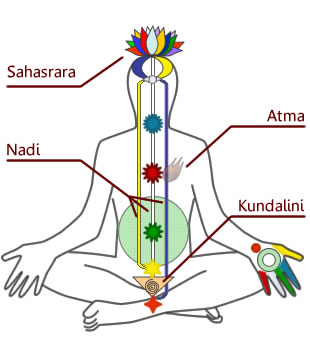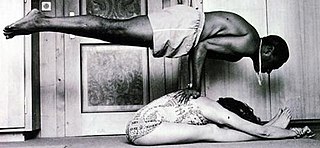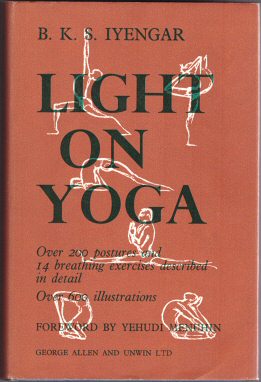
In Hinduism, Kundalini is a form of divine feminine energy believed to be located at the base of the spine, in the muladhara. It is an important concept in Śhaiva Tantra, where it is believed to be a force or power associated with the divine feminine or the formless aspect of the Goddess. This energy in the body, when cultivated and awakened through tantric practice, is believed to lead to spiritual liberation. Kuṇḍalinī is associated with Parvati or Adi Parashakti, the supreme being in Shaktism; and with the goddesses Bhairavi and Kubjika. The term, along with practices associated with it, was adopted into Hatha yoga in the 9th century. It has since then been adopted into other forms of Hinduism as well as modern spirituality and New age thought.

Kundalini yoga derives from kundalini, defined in tantra as energy that lies within the body, frequently at the navel or the base of the spine. In normative tantric systems, kundalini is considered to be dormant until it is activated and channeled upward through the central channel in a process of spiritual perfection. Other schools, such as Kashmir Shaivism, teach that there are multiple kundalini energies in different parts of the body which are active and do not require awakening. Kundalini is believed by adherents to be power associated with the divine feminine, Shakti. Kundalini yoga as a school of yoga is influenced by Shaktism and Tantra schools of Hinduism. It derives its name through a focus on awakening kundalini energy through regular practice of mantra, tantra, yantra, yoga, laya, haṭha, meditation, or even spontaneously (sahaja).

Paramahansa Yogananda was an Indian Hindu monk, yogi and guru who introduced millions to the teachings of meditation and Kriya Yoga through his organization Self-Realization Fellowship (SRF) / Yogoda Satsanga Society (YSS) of India. A chief disciple of the yoga guru Swami Sri Yukteswar Giri, he was sent by his lineage to spread the teachings of yoga to the West. He immigrated to America at the age of 27 to prove the unity between Eastern and Western religions and to preach a balance between Western material growth and Indian spirituality. His long-standing influence in the American yoga movement, and especially the yoga culture of Los Angeles, led him to be considered by yoga experts as the "Father of Yoga in the West". He lived his last 32 years in America.

René Daumal was a French spiritual para-surrealist writer, critic and poet, best known for his posthumously published novel Mount Analogue (1952) as well as for being an early, outspoken practitioner of pataphysics.

The Monkey King, also known as Sun Wukong in Mandarin Chinese, is best known as one of the main characters in the 16th-century Chinese novel Journey to the West and many later stories and adaptations. In said novel, Sun Wukong is a monkey born from a stone who acquires supernatural powers through Taoist practices. After rebelling against heaven, he is imprisoned under a mountain by the Buddha. After five hundred years, he accompanies the monk Tang Sanzang (唐三藏) riding on White Dragon Horse and two other disciples, Zhu Bajie and Sha Wujing, on a journey to obtain Buddhist sutras from the West (India), where Buddha and his followers dwell.

Journey to the West is a Chinese novel published in the 16th century during the Ming dynasty and attributed to Wu Cheng'en. It is regarded as one of the greatest Classic Chinese Novels, and has been described as arguably the most popular literary work in East Asia. Arthur Waley's 1942 abridged translation, Monkey, is known in English-speaking countries.

Swami Muktananda Paramahamsa, born Krishna Rai, was a yoga guru and the founder of Siddha Yoga. He was a disciple of Bhagavan Nityananda. He wrote books on the subjects of Kundalini Shakti, Vedanta, and Kashmir Shaivism, including a spiritual autobiography entitled The Play of Consciousness. In honorific style, he is often referred to as Swami Muktananda, or Baba Muktananda, or in a familiar way just Baba.
Edwin Francis Bryant is an American Indologist. Currently, he is professor of religions of India at Rutgers University. He published seven books and authored a number of articles on Vedic history, yoga, and the Krishna tradition. In his research engagements, he lived several years in India where he studied Sanskrit and was trained with several Indian pundits.

Hariharananda Giri, was an Indian yogi and guru who taught in India as well as in western countries. He was born Rabindranath Bhattacharya in Nadia district, West Bengal. He was the head of the Kriya Yoga Institute, United States, and founder worldwide Kriya Yoga Centers. According to some sources, Hariharananda was a direct disciple of Yukteswar Giri.

Darkfall is the first novel in the Legendsong Saga series by Australian author Isobelle Carmody. Carmody wrote the first drafts for all three books in the trilogy concurrently whilst living in Prague. It was published by Viking Books in Australia in 1997 and shortlisted for ‘Best Fantasy Novel’ at the 1998 Aurealis Awards and for ‘Australian Long Fiction’ at the 1998 Ditmar Awards.
Ahmed Toufiq is a Moroccan historian and novelist who is serving as Minister for Islamic Affairs in the government of Morocco since 2002.

The Bhagavad Gita, often referred to as the Gita, is a 700-verse Hindu scripture, which is part of the epic Mahabharata. It forms the chapters 23–40 of book 6 of the Mahabharata called the Bhishma Parva. The work is dated to the second half of the first millennium BCE. Typical of the Hindu synthesis, it is considered one of the holy scriptures of Hinduism.

Enlightenment is a concept found in several religions, including Buddhist terms and concepts, most notably bodhi, kensho, and satori. It represents kaivalya and moksha (liberation) in Hinduism, Kevala Jnana in Jainism, and ushta in Zoroastrianism.
Pierre Feuga was a French novelist, essayist and translator. A specialist of the Vedanta, the cults of Shakti and tantrism, he also taught yoga for twenty-seven years.

Vanda Scaravelli is known for her contribution to the practice of yoga in the West. She learnt yoga as an early student of two of Tirumalai Krishnamacharya's pupils, B. K. S. Iyengar who taught her the asanas, and T. K. V. Desikachar who taught her pranayama. Her style of yoga was developed with the help of her long-term students, the yoga teachers Diane Long and Esther Myers, who continued the evolution of Vanda's non-lineage yoga. Scaravelli asked her followers not to name any school of yoga after her; this has not prevented some yoga teachers from claiming to teach "Scaravelli-inspired yoga".

Light on Yoga: Yoga Dipika is a 1966 book on the Iyengar Yoga style of modern yoga as exercise by B. K. S. Iyengar, first published in English. It describes more than 200 yoga postures or asanas, and is illustrated with some 600 monochrome photographs of Iyengar demonstrating these.

God Talks with Arjuna: The Bhagavad Gita is a posthumously published non-fiction book by the Indian yogi and guru Paramahansa Yogananda (1893–1952). It is a two-volume work containing an English translation and commentary of the Bhagavad Gita. It explicates the Bhagavad Gita's psychological, spiritual, and metaphysical elements. It was originally published in 1995 in Los Angeles by the Self Realization Fellowship, and later published in other countries and languages. The book is significant in that unlike other explications of the Bhagavad Gita, which focused on karma yoga, jnana yoga, and bhakti yoga in relation to the Gita, Yogananda's work stresses the training of one's mind, or raja yoga. The full title of the two-volume work is God Talks with Arjuna: The Bhagavad Gita – Royal Science of God Realization – The Immortal Dialogue between Soul and Spirit – A New Translation and Commentary.

Yoga as exercise is a physical activity consisting mainly of postures, often connected by flowing sequences, sometimes accompanied by breathing exercises, and frequently ending with relaxation lying down or meditation. Yoga in this form has become familiar across the world, especially in the US and Europe. It is derived from medieval Haṭha yoga, which made use of similar postures, but it is generally simply called "yoga". Academics have given yoga as exercise a variety of names, including modern postural yoga and transnational anglophone yoga.

Hatha Yoga: The Report of a Personal Experience is a 1943 book by Theos Casimir Bernard describing what he learnt of hatha yoga, ostensibly in India. It is one of the first books in English to describe and illustrate a substantial number of yoga poses (asanas); it describes the yoga purifications (shatkarmas), yoga breathing (pranayama), yogic seals (mudras), and meditative union (samadhi) at a comparable level of detail.
Ember from the Sun is a novel by Mark Canter published by New English Library in 1995.















